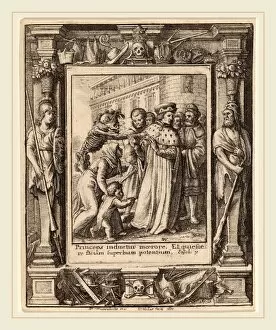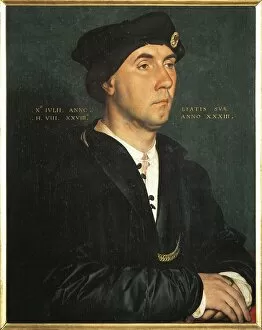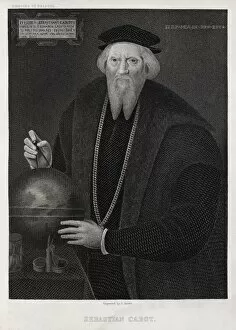Hans Holbein The Younger Collection (page 15)
Hans Holbein the Younger, a renowned German artist of the Renaissance era, left an indelible mark on the world of art with his exquisite paintings
For sale as Licensed Images
Choose your image, Select your licence and Download the media
Hans Holbein the Younger, a renowned German artist of the Renaissance era, left an indelible mark on the world of art with his exquisite paintings. One of his most famous works is "The Ambassadors, " which showcases his incredible attention to detail and mastery of perspective. Published in 1934 as part of "The World's Greatest Paintings" by Odhams Press, London, this masterpiece continues to captivate viewers with its intricate symbolism. Holbein's talent for portraiture shines through in his depiction of Jane Seymour in 1536. This portrait from 1936 beautifully captures her grace and elegance, showcasing Holbein's ability to capture the essence of his subjects. In 1909, Holbein painted Anne of Cleves, another stunning portrait that highlights his skillful use of light and shadow. The intricacies in her dress and facial expression reveal Holbein's meticulous attention to detail. Thomas Cromwell, Earl of Essex, was also immortalized by Holbein in a painting dating back to around 1537. Created in 1902, this piece demonstrates the artist's ability to convey personality through subtle nuances. Sir John Gage comes alive under Holbein's brush strokes in a captivating work from c1532-1543 (1945). The artist expertly captures Gage's commanding presence while paying careful attention to every minute detail. Cardinal Fisher holds a place among Hans Holbein the Younger’s notable portraits. Painted between 1532-1534 (1945), this artwork showcases Fisher’s authority and wisdom through masterful brushwork. Mary Lady Heveningham is brought to life by Hans Holbein the Younger’s skilled hand during c1532-1543 (1945). Her regal posture and serene expression are testament to both her beauty and inner strength. Jane Lady Lister is captured forever in a painting from c1532-1543 (1945).







